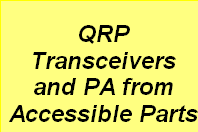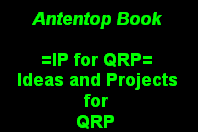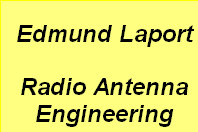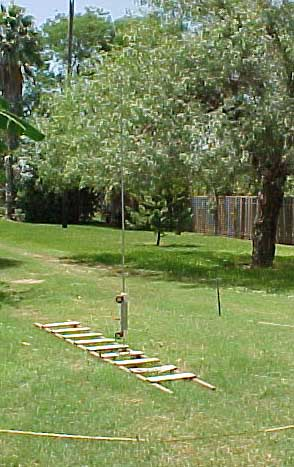


Antentop is FREE e-magazine devoted to Antennas and Amateur Radio an
Special page devoted to
Current Distribution in the A.L.C.

Custom Search
|
ANTENTOP-
03- 2003, # 004 |
Current
Distribution in the A.L.C.
|
||
|
|
|||
|
Below
--100ma & Above --79ma When I moved the coil to the top of the mast and made
a horizontal "X" top hat to resonate it back on the
same freq, I got Below
--100ma & Above --47ma
...
and some significant difference W9UCW in field strength measured
between the base and center loading coil: "The actual difference in signal strength between top
and base loading of a 9' antenna is about 16 db (measured) on
75m, but Tom calculates 8db on 160. That's because he assumes
the same current in the coil. Actually it's worse on 160 than
75."
Barry's pictures are worth a thousand words:
W9UCW's
setup with radial field (60), base loaded vertical with RF thermocouple
ammeters inserted at the top and bottom of the coil.
|
Here
is the coil in center loaded radiator, 100 mA meters at both ends
of the coil. The bottom one is showing full deflection (with power
adjusted to) - 100 mA while at the same time the top ammeter is
showing 45 mA as described above. The meters were mounted that
way so that they could do a test and then just turn the coil assembly
upside down and do another test to make sure results were the
same and that no anomalies crept in. Results were always identical.
The
reality. So
how does the real distribution of current in loaded antennas look?
The answer can be found in the John Devoldere's "Bible"
- "ON4UN's Low Band DXing", 3rd Edition, on page 9-34:
(see page 57) When
I pointed out this reference to W8JI, his response was: "I
just looked at that, and you are right. John is incorrect, and
I'll bring it to his attention. Thanks for pointing that out."
This
is not the first time that W8JI is wrong. His typical modus operandi
is first to attack and ridicule the opponent, then the exchange
of arguments ensues. When he realizes he is wrong, rather than
admitting, he clouds the issue with his "arguments".
After staying quiet for a while, he then emerges, pretending to
be the expert on the subject with corresponding postings on his
web page, without giving credit to the originator. Normally this
is called plagiarism. The
Internet is a great place to publish ideas, good and wrong. In
the spirit of Tom's posting on the eHam.net's purpose, I had to
react to his disinformation by presenting the facts, especially
when it happened more than once. Why
is this important? Technical subjects have their laws and rules.
Perpetuating wrong information doesn't serve anybody. As we can
see in this example, something that was "established"
50 years ago, perpetuated through "peer reviewed" books
to this day, can cause problems and wrong conclusions. |
||
|
|
|
||
|
Page 56 |
|||
 |
 |
 |
 |
Just for Fun:

Powered byIP2Location.com
Thanks for your time!
Last Updated:
February 27, 2020 21:45






